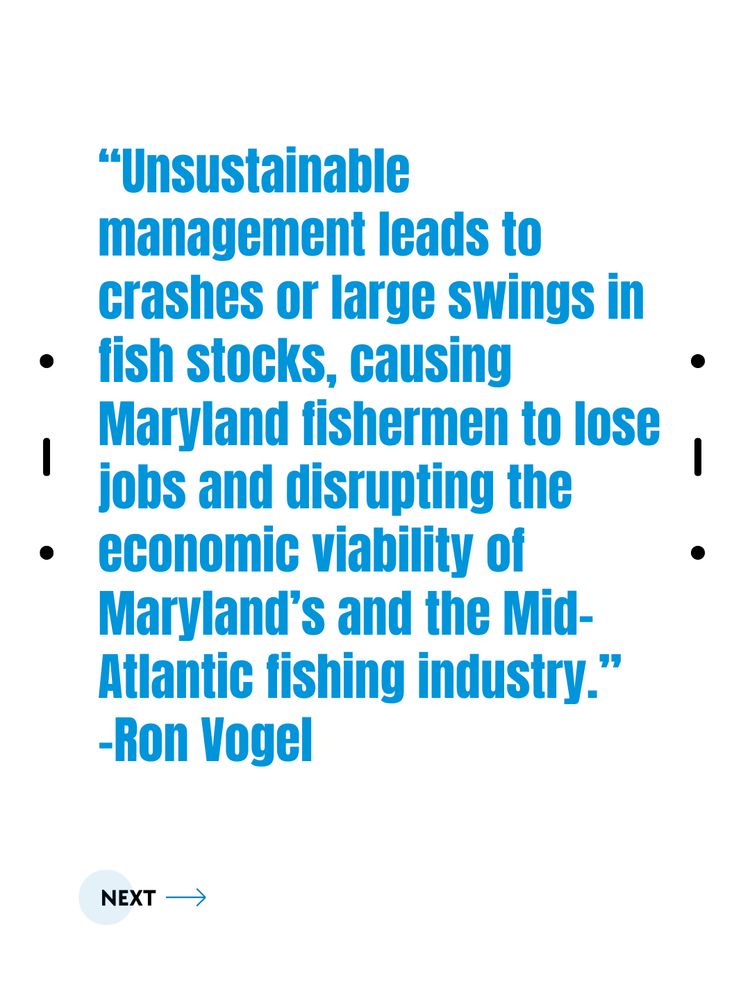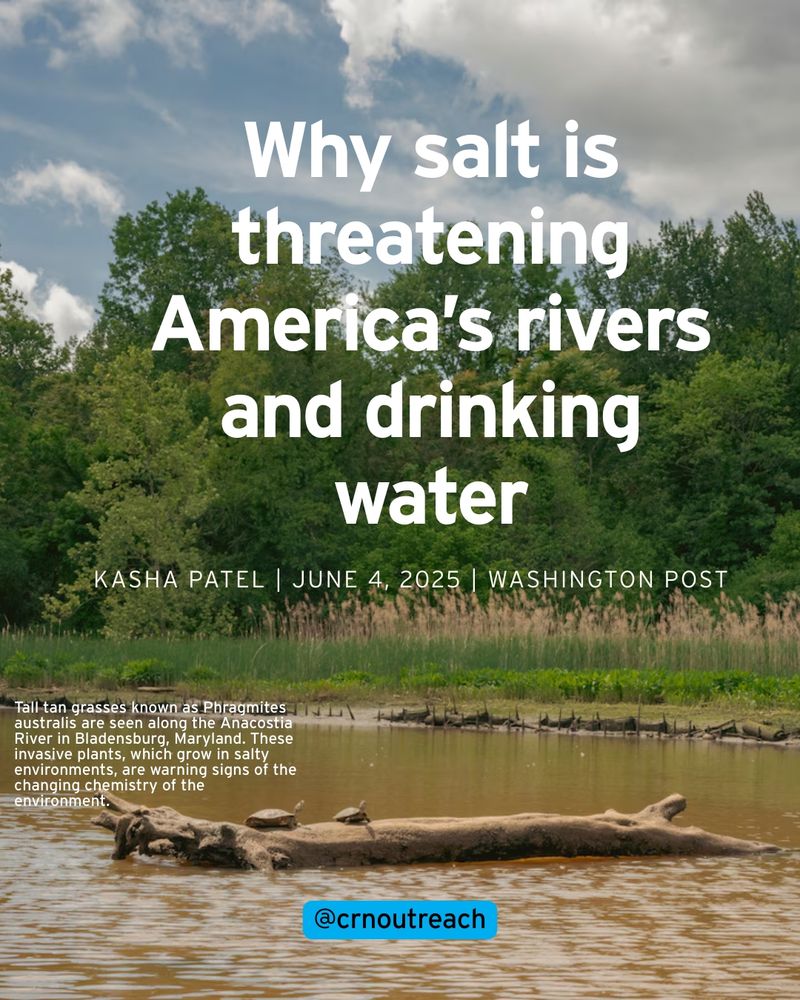
Use this link to RSVP: docs.google.com/forms/d/e/1F...
27.10.2025 17:46 — 👍 0 🔁 0 💬 0 📌 0@crnatumd.bsky.social
Unifying the University of Maryland’s groundbreaking research with the immediate requirements of Maryland’s decision-makers to address the complexities of climate change as it affects our home. https://go.umd.edu/essicarticle072125

Use this link to RSVP: docs.google.com/forms/d/e/1F...
27.10.2025 17:46 — 👍 0 🔁 0 💬 0 📌 0
Headshot of Dr. Karen Prestegaard. Wed. 11/12: Karen Prestegaard. Changes in precipitation timing and their links to flash floods and droughts. In the past decade, many regions of Maryland have experienced hot, dry periods during summer months leading to flash droughts that have affected crops, forests, and stream baseflow. In the same time period, the intensity of summer storms has been increasing, with some sites experiencing multiple storm events in excess of the 100-year storm in the same year. My research group has been developing techniques to characterize precipitation clustering and the impacts on streamflow. We also have been monitoring small streams in Maryland urban and non-urban areas to measure flood rise rates, stream channel erosion, and the underlying geologic, geomorphic, and land use characteristics that mitigate or enhance these stream responses. Our goal is to provide information that can be used to identify existing flood hazard regions and to identify areas that have enhanced responses when developed.
Join us on November 12, at 4:30 PM in room 2204 in the Edward St. John Teaching and Learning Center. Dr. Karen Prestegaard will give a talk about changes in precipitation timing and their links to flash floods and droughts. We hope to see you there!
27.10.2025 15:31 — 👍 1 🔁 1 💬 1 📌 0
Karen Prestegaard wearing a blue shirt and glasses, holding a laptop in her lab to promote her Reddit Ask-Me-Anything on September 29, 2025
@umdgeology.bsky.social's Karen Prestegaard studies the links between precipitation, stream baseflow, stormwater runoff and evapotranspiration in the mid-Atlantic region.
Ask Karen your questions about freshwater and stormwater flooding in today's Reddit Ask-Me-Anything: redd.it/1ntaqz0

Nicole Hernandez Hammer is a Guatemalan-American sea-level researcher and climate-change expert. She served as a climate-science and community advocate at the Union of Concerned Scientists. Previously, she was assistant director of the Florida Center for Environmental Studies at Florida Atlantic University. Hernandez Hammer is a participant in the Keeping Current project at the Van Alen Institute in Miami, Florida.
Happy #latinamericanheritagemonth! Today, we're highlighting Nicole Hernandez Hammer, a Guatemalan-American oceanographer.
Source: vanalen.org/person/nicole-hernandez-hammer



 19.09.2025 14:54 — 👍 0 🔁 0 💬 0 📌 0
19.09.2025 14:54 — 👍 0 🔁 0 💬 0 📌 0



 19.09.2025 14:54 — 👍 0 🔁 0 💬 1 📌 0
19.09.2025 14:54 — 👍 0 🔁 0 💬 1 📌 0

How do satellites support #Maryland's economy?
19.09.2025 14:54 — 👍 1 🔁 0 💬 1 📌 0
Happy #LatinxHeritageMonth! To celebrate, we'll be showcasing Latinx earth and environmental scientists every week of the month.
Our first scientist is Julia Carabias Lillo, a Mexican ecologist, professor, and public servant.

The road salt issue has a relatively simple solution: use less. It can be an all-around win for communities. In Edina, Minnesota, they install heated sidewalks or position a building’s entrance toward the sun, leveraging better city planning to melt snow. In New Hampshire, workers and contractors who apply salt are often protected from lawsuits from people slipping and falling.
What are some possible solutions to this problem?
26.08.2025 13:03 — 👍 0 🔁 0 💬 0 📌 0
“We have good management plans in place, but the information we have is telling us that the same management plans will probably not be effective enough at some point in the future,” said Kristen Kavanaugh, executive director of the Delaware River Basin Commission.

Salt concentration increases over the past 40 years. Potomac river: +41%. Patuxent river: +102%. Anacostia river: +500%.

Over time, salt can corrode our infrastructure. according to the EPA, Chloride ions cause billions of dollars’ worth of damage to bridges, parking structures, and buildings around the U.S. each year. Excess road salt wears away concrete and leaves calcium carbonate behind on the supports underneath bridges over the Anacostia River.

Along the eastern coasts, ghost forests have succumbed to increased salinity, no longer able to protect coastal communities from large storms. An inlet near D.C.'s Kenilworth Gardens shows indications of drought. Salt concentrations can spike in freshwater rivers when rain is scarce.
Salt contamination is a major concern due to overapplication of road salt in winter, drought, and sea level rise.
26.08.2025 13:03 — 👍 0 🔁 0 💬 1 📌 0
Why salt is threatening America's rivers and drinking water. Written by Kasha Patel. June 4, 2025. Washington Post. Tall tan grasses known as Phragmites australis are seen along the Anacostia River in Bladensburg, Maryland. These invasive plants, which grow in salty environments, are warning signs of the changing chemistry of the environment.

Freshwater ecosystems, like the Anacostia River, are growing saltier year-round. That increasing salinity has not only been linked to mass deaths of aquatic life and damaged infrastructure, but some people can even taste it in drinking water.

Too salty to drink. Around the DC metro area, the biggest salt contamination comes in the winter. People apply an abundance of salt on roads – if you can hear it crunch under your feet, it’s too much – and the excess runs off into riverways.

The biggest source around DC and other major northern inland cities is an overapplication of road salt to thaw winter ice, which enters into rivers or the ground, According to sujay kaushal, professor and reseacher at umd and member of the Climate resilience network.
Dr. Sujay Kaushal, a professor and researcher in the Department of Geology at UMD, was featured in the article "Why salt is threatening America's rivers and drinking water," published in the Washington Post on 6/4/25.
26.08.2025 13:03 — 👍 0 🔁 1 💬 1 📌 0
LGBTQIA earth system scientists and environmentalists you should know! Click go.umd.edu/pride2025 for a larger image with clickable links. #pride
30.06.2025 18:38 — 👍 1 🔁 1 💬 0 📌 0
Freshwater streams in the Chesapeake Bay watershed are becoming saltier. Dr. Sujay Kaushal explains why and the consequences of inaction in this Washington Post article:
www.washingtonpost.com/climate-envi...

Line graph time series of 2025's daily Arctic sea ice extent compared to decadal averages from the 1980s to the 2010s. The decadal averages are shown with different colored lines with purple for the 1980s, blue for the 1990s, green for the 2000s, and white for the 2010s. Thin white lines are also shown for each year from 2000 to 2024. 2025 is shown with a thick gold line. There is a long-term decreasing trend in ice extent for every day of the year shown on this graph between April and July by looking at the decadal average line positions.
Friday ice update - #Arctic sea ice extent is currently the 6th lowest on record (JAXA data)
• about 120,000 km² below the 2010s mean
• about 700,000 km² below the 2000s mean
• about 1,220,000 km² below the 1990s mean
• about 1,620,000 km² below the 1980s mean
More: zacklabe.com/arctic-sea-i... ⚒️🧪

Thank you for visiting the Climate Resilience Network at Science and Tech Way on #MarylandDay! See you next year!
02.05.2025 13:46 — 👍 0 🔁 1 💬 0 📌 0Educators, have your learners ever wondered how scientists figure what colors dinosaurs may have been? Share this video with them, then use the @scifri.bsky.social STEAM activity "How Do Scientists Know What Dinosaurs Looked Like?" to dig deeper! #EduSky
www.sciencefriday.com/educational-...

Community science is a great way to celebrate Earth Day all year long! Anyone of any age, experience level, or background can provide valuable information that increases scientific knowledge. #earthday #communityscience go.umd.edu/earthdaycomm...
22.04.2025 13:23 — 👍 1 🔁 0 💬 0 📌 0
#MarylandDay is almost here! Join us in College Park for a daylong celebration of learning, discovery and all things UMD 💛 marylandday.umd.edu
14.04.2025 15:54 — 👍 1 🔁 1 💬 0 📌 0
It's #WorldHealthDay! Did you know that regular time outside improves your physical and mental health? Click this link to check out some of the research about nature's health benefits. go.umd.edu/natureshealt...
07.04.2025 15:06 — 👍 0 🔁 0 💬 0 📌 0
Middle school earth science project ideas #scienceeducation #middleschool #projectideas #scienceteachers climate.umd.edu/middle-schoo...
31.03.2025 13:59 — 👍 0 🔁 0 💬 0 📌 0
Here are 4 of the many women who have made an impact in earth and environmental sciences. #womenshistory Link to larger image: www.canva.com/design/DAGht...
20.03.2025 15:27 — 👍 0 🔁 0 💬 0 📌 0Thank you to CRN partners, community members, and everyone who donated to ESSIC’s fund on #GivingDayUMD. Your generosity will keep #ScienceTerps, ESSIC, and CRN going as we work to solve grand challenges.
06.03.2025 14:31 — 👍 1 🔁 0 💬 0 📌 0
#GivingDayUMD starts TODAY! Donate to ESSIC’s fund to allow CRN to continue to support and work with local communities like Crisfield, MD, as they become more climate-resilient. go.umd.edu/essicgivingday
www.wboc.com/news/flood-d...
#GivingDayUMD is TOMORROW! Help #ScienceTerps @ ESSIC in their efforts to create a more resilient Maryland. go.umd.edu/essicgivingday
04.03.2025 13:29 — 👍 0 🔁 0 💬 0 📌 0
Your contribution will help CRN in our work to help Marylanders become better prepared for extreme weather.
#GivingDayUMD is on Wednesday, March 5! Save the date to contribute to the Earth System Science Interdisciplinary Center to support projects that bring Maryland fearlessly forward, including the Climate Resilience Network. go.umd.edu/essicgivingday
24.02.2025 14:39 — 👍 2 🔁 0 💬 0 📌 0